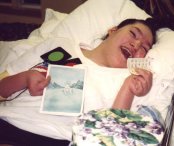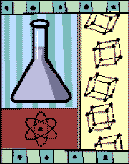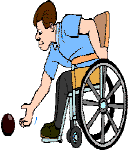The Cerebral Palsy Network
- What is CP?
- Definitions
- Big Words
- Why my child?
- Expectations
- More Information
- About CPN
Around CPN
Resource
Center
Much of the information found on this page and those that follow,
was taken directly from "Cerebral Palsy, a complete guide for
care giving" written by Dr.'s Freeman Miller and Steven J. Bachrach, both from the DuPont
Children's Hospital located in Wilmington, Delaware. CPN recommends this book as a wonderful resource
for Cerebral Palsy. You can purchase this book online at: Barnes and Noble. Please use the link
above to go right to the book.
Cerebral Palsy is a collection of motor disorders resulting from damage to the brain that occurs before, during, or after birth. The damage to the child's brain affects the motor system, and as a result the child has poor coordination, poor balance, or abnormal movement patterns - or a combination of these characteristics.
Cerebral palsy is a static disorder of the brain, not a progressive disorder. This means that the disorder or disease process will not get worse as time goes on. Nor are the motor disorders associated with cerebral palsy temporary. Therefore, the child who has temporary motor problems, or who has motor problems that get worse over time, does not have cerebral palsy.
Children with cerebral palsy may have many other kinds of problems, including medical problems. Not all these problems are related to brain injury, but most of them are neurological in nature. They can include epilepsy, mental retardation, learning disabilities, and attention deficit-hyperactivity disorder.
Congenital cerebral palsy (or cerebral palsy that exists from birth) is responsible for the largest proportion of cases of cerebral palsy. For other children, injuries sustained during the birthing process or in early childhood may be considered the cause of cerebral palsy. When motor disorders appear after age 5, they are slightly different from the motor disorders of cerebral palsy and are usually diagnosed as they would be in an adult, as stroke or traumatic brain injury.
This site designed & maintained by Mystic Dawn Web Creations. The Cerebral Palsy Networkę1997/2003. All graphics are the exclusive property of CPN, unless otherwise indicated. Contact CPN at Cerebral Palsy Network for further information.
Last updated 03/24/03

Amanda the reason CPN was
started
CPN
Reunion 2003

CP
Research
What's happening Today with
Cerebral Palsy

Special
Olympics
What's happening with
Special Olympics in 2003

CP
& Education
What's happening with
Special Need and Education in 2003